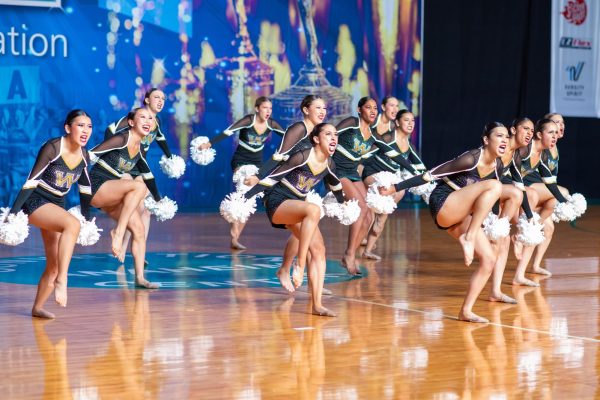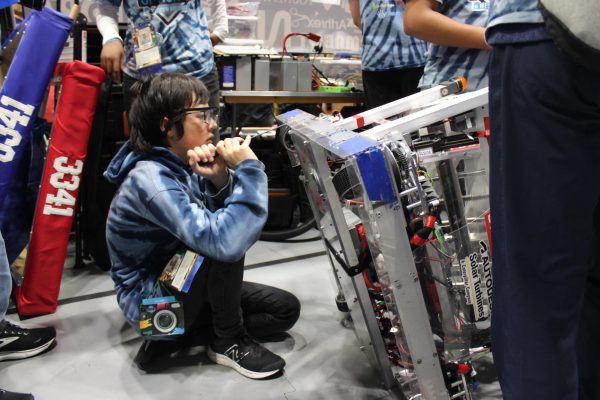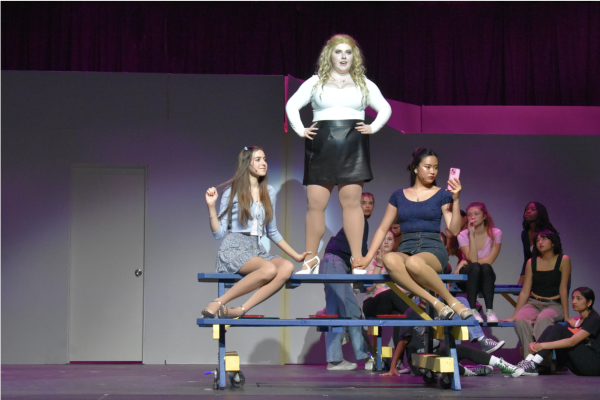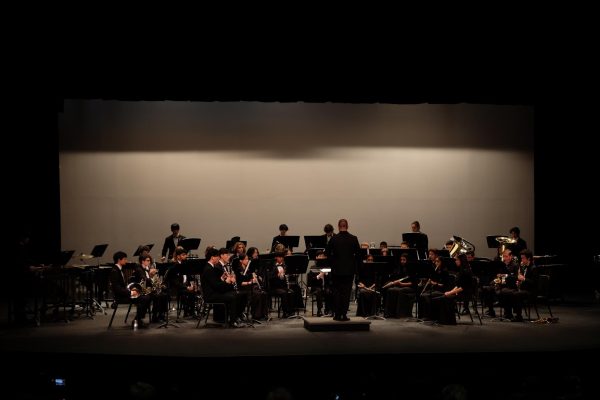GOLD hosts solo, ensemble Command Performances
May 5, 2023
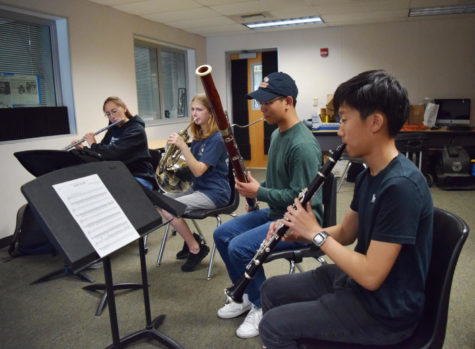
For a Saturday morning, the campus was bustling. Students in black dresses, suit jackets, and button ups rushed onto campus and lugged instrument cases into the band room, where trumpeters played pedal tones and cellists rosined their bows. In doing so, Westview GOLD members were preparing themselves for the first day of their annual solo and ensemble evaluations.
Every year, GOLD members are required to participate in one solo performance and one ensemble—either a duet, trio, quartet, or quintet—which is then evaluated by professional adjudicators, April 22 and May 2.
GOLD members began preparations for their solo ensemble performances in early January, and the first step of the process was selecting the solo music they would be playing.
In selecting his solo piece, tuba player Thomas Fernandez (10) browsed through sheet music in the library while listening to audio recordings of pieces, making note of each musician’s interpretations and musical phrasings. Last year, Fernandez had opted for a piece that was technically challenging which made his preparations for his performance arduous, so this year, he searched for a piece he resonated with.
When Fernandez heard Victor Ewald’s Brass Quintet No. 1, he said he knew he’d found a piece with a story he could tell.
“A private teacher, who is a professional horn player, told me that I should try to think of a setting whenever I play and to base my musical choices off of that mood I’m imagining, which is what I did,” Fernandez said.
To encapsulate the piece’s oscillation between serious cadenzas and vivacious, upbeat dance music, Fernandez said he imagined 1500s-esque ballrooms akin to Shakespeare’s “Romeo and Juliet.”
David Jang (9) also selected his solo piece, Ralph Vaughan Williams’ Oboe Concerto, for the dynamic mood that Jang said best highlighted his ability to portray somberness through his playing.
“[Williams’ Oboe Concerto is] a piece I’ve always had interest in because it’s very cool-sounding and it has ups and downs,” Jang said. “The mixed emotions have always been a characteristic of the piece that I’ve been so fascinated by, and its [tonal] ambiguity is something that you don’t see a lot in classical music.”
Shortly after selecting solo pieces, students formed ensemble groups, which consisted of duets, quartets and quintets.
While most freshmen only play in one ensemble, Jang participated in two ensembles on top of his solo performance. And, as an added level of challenge, Jang played different instruments—oboe, English horn, and clarinet—for each of his three performances.
Jang joined his second ensemble group upon the request of an ensemble that needed a single clarinetist to complete their quintet. Though he only began playing clarinet in August—at the start of marching season—Jang rose to the occasion and accepted the spot.
According to Jang, there is an added level of pressure when playing in an ensemble compared to a full marching band as each instrument can be heard clearly and distinctly. As a result, he spent much of his preparation time focusing on his musical tone.
“It was pretty hard to catch up on the rest of the group’s standards, given that some of them had been playing their instruments for years and I had seven months of experience, so I knew I had to work hard on being up to their tonal standards,” Jang said. “I had to focus a lot on my technique, and I knew that if I didn’t, I’d stick out like a sore thumb. There’s really no room for faking it in an ensemble.”
Likewise, Fernandez said that there’s a greater attention to detail required of musicians in an ensemble.
“We had to make lots of musical decisions, like when to cut off notes or how much we wanted to emphasize our dynamics, because details make the band sound really good,” Fernandez said. “It was something we had to think about that we usually don’t worry as much about in marching season, and it was nice when we were all able to make it work.”
Though both Jang and Fernandez described their solo and ensemble preparations as challenging, they also said that they enjoyed the new level of musical freedom.
“I was able to be a lot more expressive because I was passionate about my piece, and I think having the pressure of being in three groups improved my playing and made me a more consistent player,” Jang said.
Following their performances, students received comments from adjudicators about their performances. A ranking of either “poor,” “good,” “excellent,” or “superior” and any written comments from judges were posted outside the audition rooms. All performances awarded for the “superior” ranking also qualify for Command Performances, where students perform their pieces again for the entirety of GOLD. This year, 12 soloists and seven ensembles attained this honor and performed on May 2.
Among the chosen Command Performances, Jang was selected for both his oboe solo and clarinet ensemble piece.
“My initial reaction was confusion, as I was not even expecting to receive one spot on the recital list,” Jang said. “I am still in shock yet honored that both the judges and the directors nominated me for two performances I participated in.”
To prepare for the Command Performance, Jang applied the judges’ comments he received in his initial performance by refining his musical phrasings. However, above all, he said he aimed to put on an entertaining performance.
“The solo and ensemble performances have helped me gain an appreciation for the performance half of the music,” Jang said. “One of the most valuable pieces of feedback I got this year is that sometimes you need to give your listeners a moment to breathe, and that’s something I’ll definitely focus on to make my next performances more enjoyable.”



